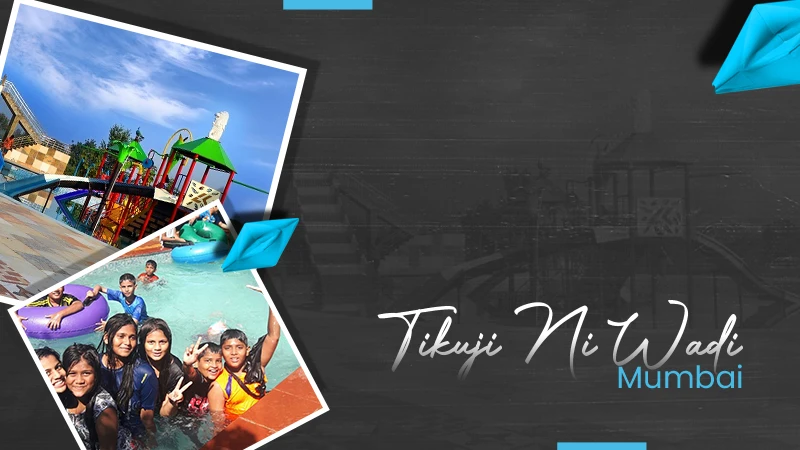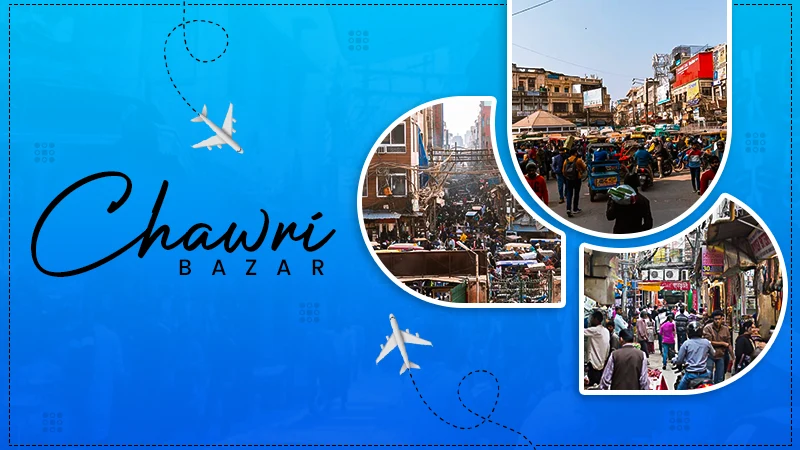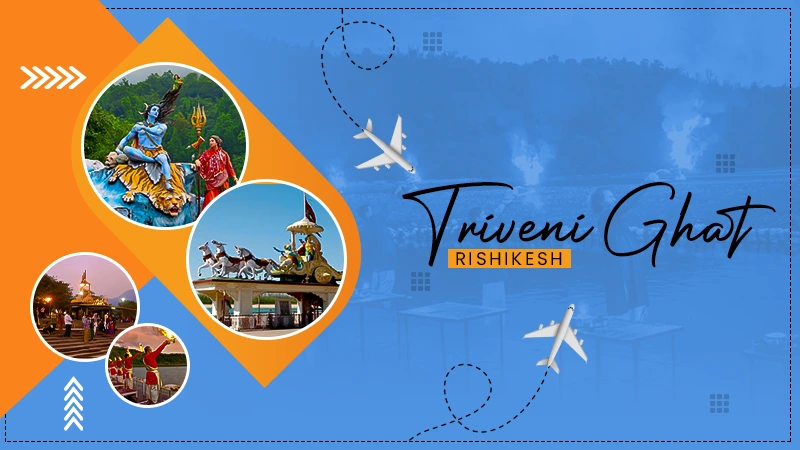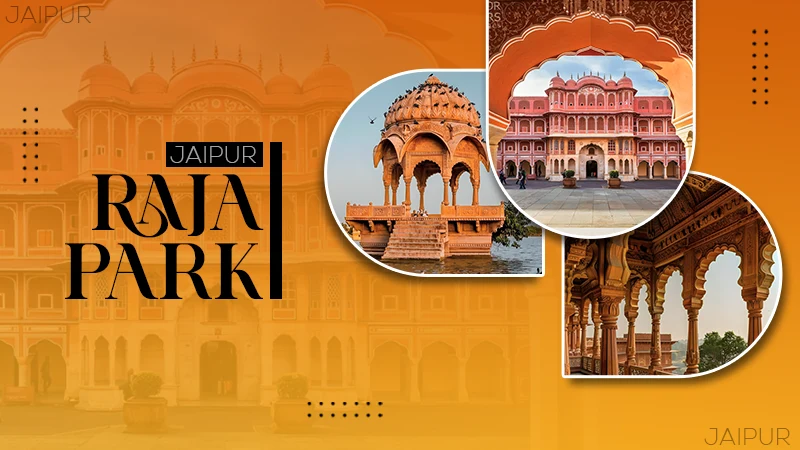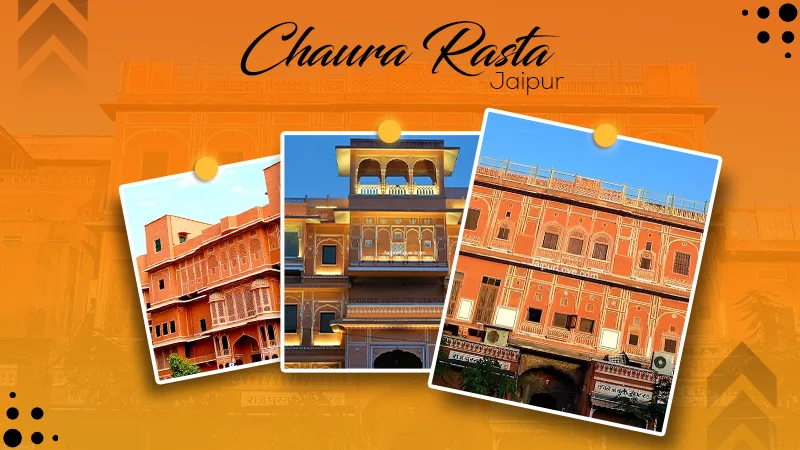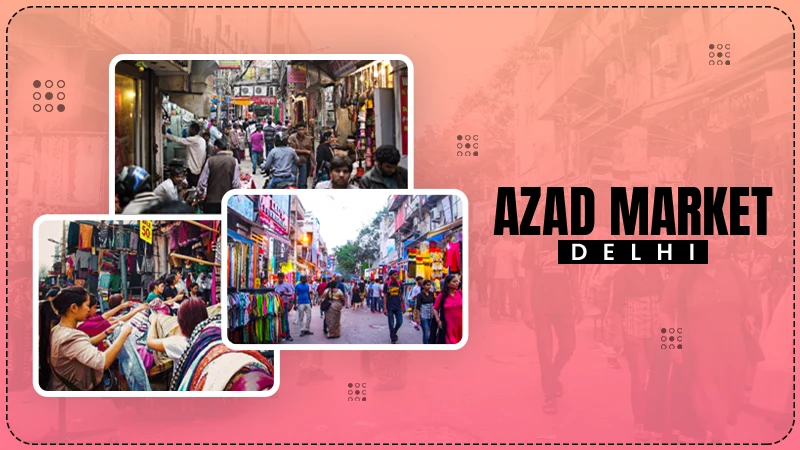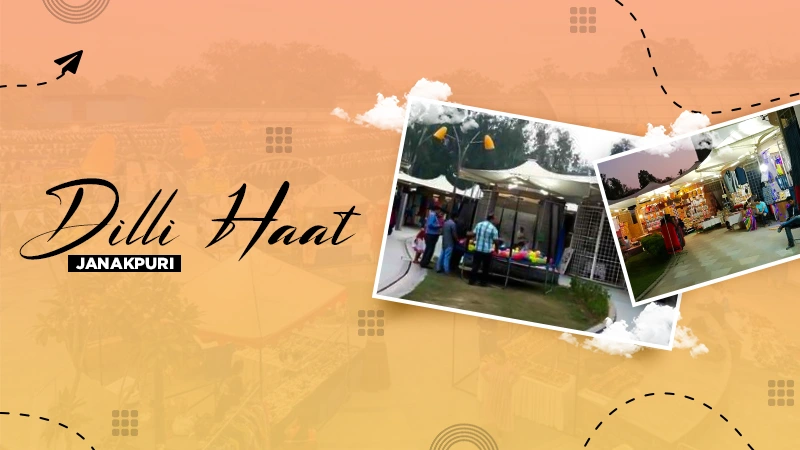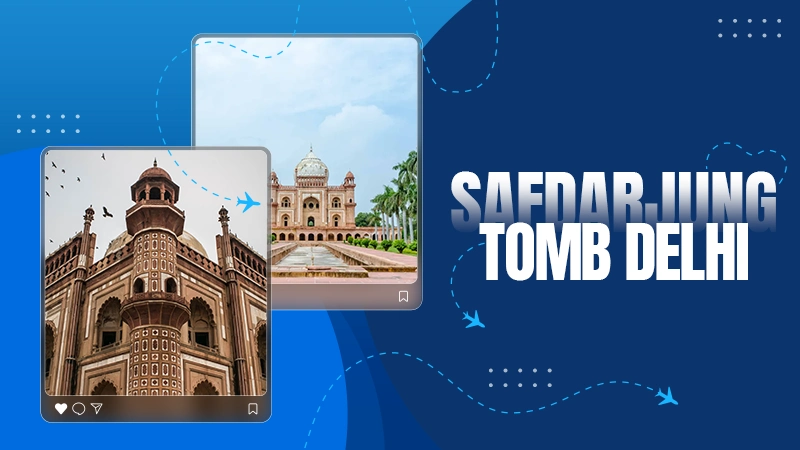
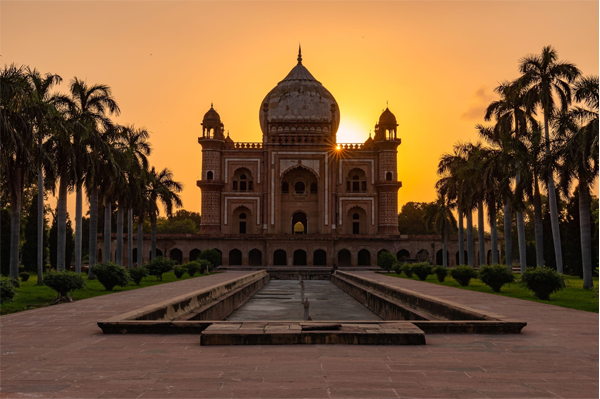
Delhi is dotted with several monuments and sites that hold a mirror to India’s rich and vivid history. Amongst the list, one that intrigues many and invites a slew of visitors all year round is Safdarjung Tomb.
Safdarjung Tomb, nestled in the heart of Delhi, is the epitome of Mughal art and architecture and provides a glimpse into the heydays of the dynasty in India. Constructed in 1754 during the reign of Muhammad Shah, it’s the last monumental tomb garden from the Mughals.
If you’re fascinated by the stunning carvings and details of the Safdarjung Tomb, Delhi and want to savor its beauty, we’ve got a handy guide just for you.
Explained: What is Safdarjung Tomb Famous For?
Safdarjung Tomb is a testament to the iconic Mughal architecture and serves as a significant historical monument. As the last tomb garden from the Mughals, it symbolizes the twilight of the empire’s architecture.
Historical Background
The tomb was commissioned by Nawab Shuja-ud-Daula, the son of Safdarjung, in honor of his father.
Safdarjung, whose real name was Mirza Muqim Abul Mansur Khan, was among a few powerful Prime Ministers of the Mughal Empire under Emperor Muhammad Shah.
Originally from Persia, Safdarjung rose to prominence in India, eventually becoming the Nawab of Oudh (now Awadh) in present-day Uttar Pradesh. His influence and power were so immense that he effectively ruled the empire during the latter part of Muhammad Shah’s reign.
Safdarjung’s Tomb was built during a period of decline for the Mughal Empire. By the mid-18th century, the empire had lost much of its former glory, with regional powers gaining their independence and external forces threatening its stability.
The construction of the tomb, therefore, marks the end of an era, representing the last major architectural project of the Mughal dynasty before its eventual fall.
Architectural Design
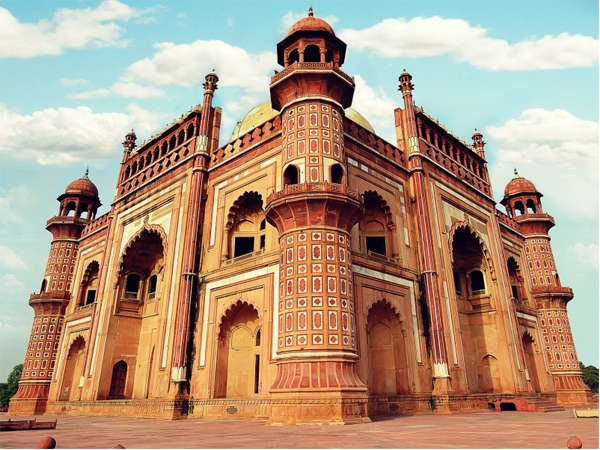
The architecture of Safdarjung Tomb is a symphony of Mughal and Persian influences, reflecting the popular cultural amalgamation of the time.
The tomb’s design resembles that of Humayun’s Tomb, but with distinct differences that underscore the declining craftsmanship and resources available to the Mughals during this period.
The tomb is constructed primarily of red and brown sandstone, with white marble used for decorative elements. It stands on a raised platform, and the central structure is crowned by a large dome, a prominent feature of Mughal architecture. The dome is surrounded by four smaller domed pavilions, creating a symmetrical appearance typical of Mughal design.
The tomb is surrounded by a Charbagh, a four-part garden divided by water channels, which is another hallmark of Mughal architecture. The garden layout is intended to represent the Islamic concept of paradise, with the tomb at its center symbolizing the final resting place of the departed.
The main entrance to the tomb is through an impressive gateway that features intricate carvings and ornamentation. The gateway is flanked by two large wings that originally served as the residences for the tomb’s caretakers. As you enter the complex, you are greeted by a large courtyard, with the tomb standing majestically at its center.
The central chamber of the tomb houses the cenotaph of Safdarjung, which is surrounded by smaller rooms that were likely used for offering prayers. The interiors of the tomb are adorned with delicate carvings, floral motifs, and calligraphy, though these decorations are less elaborate than those seen in earlier Mughal structures, reflecting the dwindling resources of the empire.
One of the unique architectural features of Safdarjung Tomb is the use of hidden staircases that lead to the rooftop. These staircases are neatly concealed. The rooftop offers panoramic views of the surrounding area, exhibiting Delhi in its sheer vibrance.
Cultural and Historical Significance
Safdarjung Tomb is not just an architectural marvel; it also holds significant cultural and historical value.
As the last major Mughal monument, it represents the end of an era, marking the transition from the grandeur of Mughal architecture to the more subdued styles that followed. The tomb reflects the empire’s decline, highlighting the challenges dealt by the Mughals during the 18th century.
Despite its historical significance, Safdarjung Tomb is overshadowed by other Mughal monuments in Delhi, such as Humayun’s Tomb. But it still remains a crucial site for historians and architecture enthusiasts seeking to uncover more of Mughal architecture and the cultural shifts and turbulence that occurred during this period.
Today, Safdarjung Tomb is managed by the Archaeological Survey of India (ASI), which is responsible for its preservation and maintenance. The tomb attracts visitors from around the world, offering them a chance to step back in time and experience the last vestiges of Mughal architecture.
Who is Buried in the Safdarjung Tomb?
Safdarjung Tomb is the mausoleum of Safdarjung, also known as Mirza Muqim Abul Mansur Khan. He was a well-known nobleman and the Mughal Prime Minister at a time when Emperor Muhammad Shah was in power.
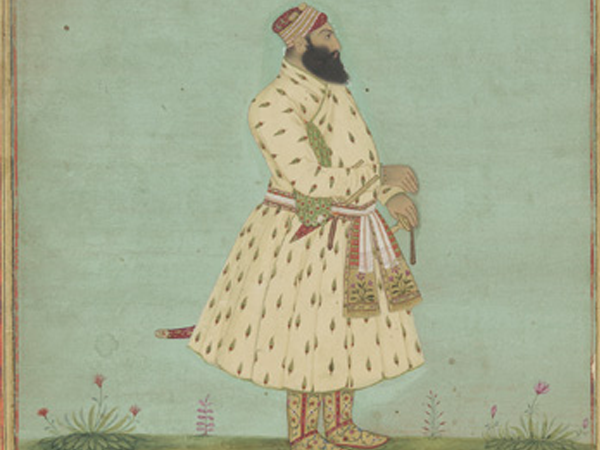
He migrated from Persia and was later known as the Nawab of Awadh, a region in the northern state of Uttar Pradesh in India. This tomb was constructed by Nawab Shuja-ud-Daula in 1754 to pay tribute to the memory of his father.
Things to Do When Visiting Safdarjung Tomb?
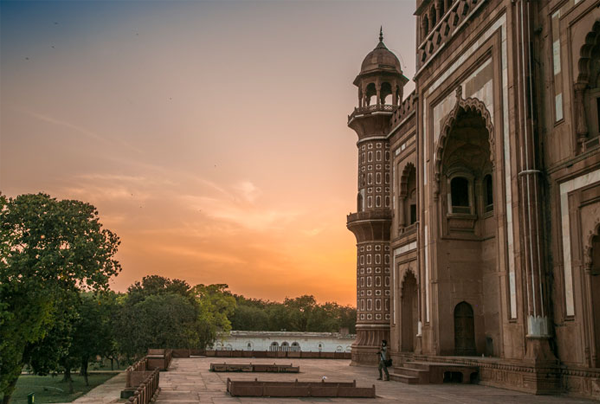
For those eager to explore Safdarjung Tomb and wondering what to do inside, here’s the complete to-do list for reference:
- Explore the Main Mausoleum: Bask in the beauty of the Mughal architecture, including the central dome and intricate carvings, and stand in awe.
- Take a Stroll Through the Charbagh Gardens: Relish a walk through the quaint, symmetrical gardens, divided by water channels. Use the tomb and its gardens as a peaceful retreat from the busy city.
- Unravel the Mysteries of Hidden Staircases: Access the rooftop via concealed staircases for panoramic views of the area.
- Visit the Mosque and Pavilions: Explore additional structures within the complex, each with unique architectural details.
- Photography: Capture the tomb’s serene atmosphere and detailed architecture, especially during early morning hours.
- Hire a Guide: If your fascination about the tomb gets the better of you, hire a guide and gain deeper insights into the tomb’s historical significance and the bygone Mughal era. Flex your knowledge later!
Safdarjung Tomb Ticket Price and Timings
Safdarjung Tomb is located in the epicenter of Delhi, and its address is: Air Force Golf Course, Delhi Race Club, New Delhi, Delhi 110003.
It’s accessible to the public in exchange for an entry fee that’s pretty affordable. As of 2024, Safdarjung Tomb’s ticket price for Indian citizens is around INR 25, while foreign tourists are charged approximately INR 200.
Since the site’s under the watchful eye of the Archaeological Survey of India (ASI), the revenue generated through ticket sales goes straight towards funding the preservation and maintenance of it.
As far as Safdarjung Tomb’s opening and closing times are considered, the site is open to visitors every day from 7:00 AM to 5:00 PM. However, it’s recommended to check the latest schedule before planning your visit, especially during public holidays or special events when timings might vary.
Best Time to Visit Safdarjung Tomb
Since Safdarjung Tomb beckons from the city of Delhi, the best time to visit this historical site is during the cooler months, from October to March.
During the said period, Delhi experiences pleasant weather conditions, with temperatures ranging from 10 °C to 25 °C, making it highly conducive for travel and exploration activities.
Early mornings are particularly recommended when the tomb is less crowded, providing an avenue for peaceful retreat and beautiful photography.
That said, it’s recommended to avoid visiting the tomb during the hotter months of April to September since this 6-month period makes the outdoors unbearable with temperatures soaring to 40 °C or more. The monsoon season (July to September) brings heavy rainfall, which might disrupt your plans.
How to Reach Safdarjung Tomb?
Reaching Safdarjung Tomb via road is easy-peasy. Here’s how you can get there:
- By Car or Taxi: You can drive or hire a taxi to reach Safdarjung Tomb. It is located on Safdarjung Road, near the Jor Bagh Metro Station, and is easily accessible from various parts of Delhi. If you’re coming from central Delhi, it should take around 20-30 minutes, depending on traffic. Parking is available near the tomb, though it can be limited.
- By Bus: Delhi Transport Corporation (DTC) buses regularly ply routes that pass near Safdarjung Tomb. You can check for buses that stop at Safdarjung Tomb or nearby landmarks like Safdarjung Airport or AIIMS.
- By Metro: The nearest metro station to Safdarjung Tomb is Jor Bagh Metro Station. It’s located on the Yellow Line of the Delhi Metro Map. The tomb is approximately 1 kilometer from the station, making it a convenient walking distance or a short auto-rickshaw ride away.
Places to Visit Nearby
Here are some places to visit nearby Safdarjung Tomb:
- Lodhi Garden
- India Gate
- Humayun’s Tomb
- Khan Market
- National Gallery of Modern Art
- Nehru Park
- Rashtrapati Bhavan
- Qutub Minar
Parting Thoughts
Safdarjung Tomb comes to the fore as Delhi’s most iconic and stunning architectural marvels from the Mughals. Whispering tales of the past, it invites hundreds of thousands of travelers from around the world to soak up its grandeur.
If you’ve got a curious heart and a bent for unraveling history and are in or around Delhi, this is your cue to plan a visit to Safdarjung Tomb. Visit, explore, and thank us later!
Which is the biggest tomb in India?
The biggest tomb in India is Humayun’s Tomb in Delhi. It is a grand structure built in 1570 for the Mughal Emperor Humayun and is often considered a precursor to the Taj Mahal in terms of its architectural style.
Is there a parking facility at Safdarjung Tomb?
Yes, there is a parking facility near Safdarjung Tomb, but spaces can be limited, especially during peak visiting hours. It’s advisable to arrive early to secure a spot.
Are there any eateries or restaurants near Safdarjung Tomb?
Yes, there are several eateries and cafés nearby, especially in areas like Khan Market and Lodhi Colony, which are a short drive away. You can find a variety of dining options, ranging from local cuisine to international fare.
Is there a guided tour available at Safdarjung Tomb?
Yes, guided tours are available. You can hire a guide at the site or pre-book a tour through various travel services to gain deeper insights into the history and architecture of the tomb.
Are there restroom facilities at Safdarjung Tomb?
Yes, there are basic restroom facilities available for visitors within the tomb complex. However, they may be limited, so plan accordingly.
Which Metro Station is Nearest to Safdarjung Tomb?
Jor Bagh is the nearest metro station to Safdarjung Tomb. located on the Yellow Line, it is easily accessible by anyone living in New Delhi.





